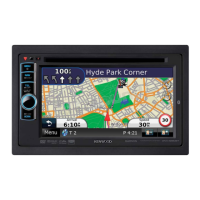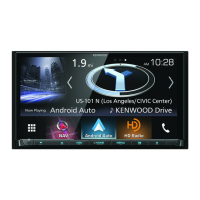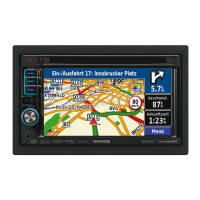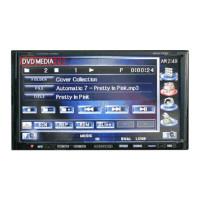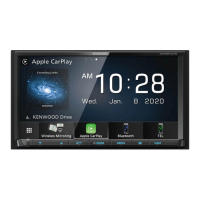
Do you have a question about the Kenwood DNX4250BT and is the answer not in the manual?
| MP3 playback | Yes |
|---|---|
| Audio formats supported | AAC, MP3 |
| FM band range | 87.5 - 108 MHz |
| Supported radio bands | AM, FM, LW, MW |
| Preset stations quantity | 24 |
| Display type | LED |
| Display diagonal | 6.1 \ |
| USB version | 2.0 |
| Bluetooth version | 3.0+HS |
| Line outputs (RCA) | 3 |
| USB ports quantity | 1 |
| Product color | Black |
| Disc types supported | CD, CD-R, CD-RW, DVD, DVD+R, DVD+RW, DVD-R, DVD-RW |
| Weight | 2000 g |
|---|---|
| Dimensions (WxDxH) | 181.7 x 160.3 x 112.2 mm |
Agreement for the use of software embedded in the device.
Agreement for the device, application, or downloaded content.
Access help information and support topics within the device.
Find specific help topics within the device's help menu.
Explanation of icons displayed in the status bar of the main menu.
Use on-screen buttons for navigation and control.
How to use the on-screen keyboard for input.
Create shortcuts for frequently used locations or categories.
Delete existing shortcuts from the device.
Search for locations using categories.
Narrow search results within categories.
Search for locations by text input.
Modify search area for locations.
Begin navigation to a destination.
View and select from different route options.
Navigate along a calculated route.
Interact with and view the navigation map.
Adjust map display elements like points of interest.
Review recorded trip paths and travel history.
Customize displayed map data fields.
Adjust map view angle and orientation.
Add or edit shortcut buttons on the map.
Remove map shortcut buttons.
Overview of the Smartphone Link app for live data.
Steps to download and install the Smartphone Link app.
Establish connection between device and Smartphone Link.
Transfer locations from phone to device.
Manage hands-free calling when connected.
Activate traffic data subscriptions for regions or countries.
How the navigation system receives traffic data.
Use traffic data via Smartphone Link connection.
Explanation of traffic icon colors and their meanings.
Adjust core navigation system settings.
Modify map display and appearance.
Activate specific map data.
Configure navigation behavior and preferences.
Customize screen appearance and brightness.
Set route calculation criteria.
Install the latest system software via USB.
Purchase and install new map data.
Information on safety camera alerts and database.
Load custom points of interest databases.
Locate custom points of interest on the map.
